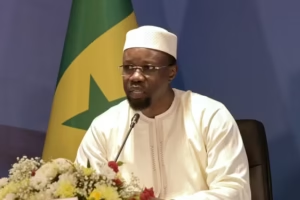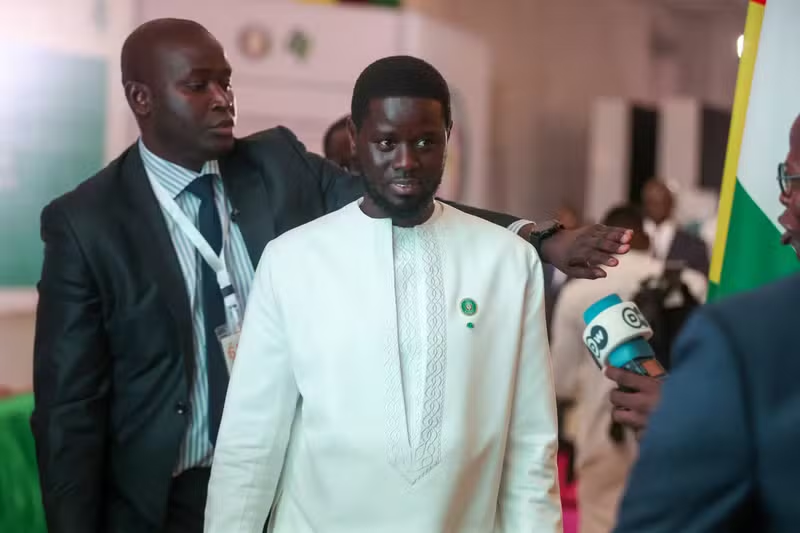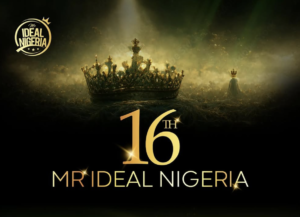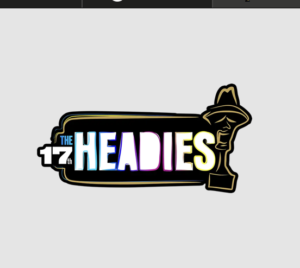Senegal’s Style Revolution: Where Tradition Meets Modernity
In Dakar’s political corridors, something quietly radical is happening. President Bassirou Diomaye Faye and Prime Minister Ousmane Sonko are making waves not just through policy but through fashion. With their sleek, tailored takes on traditional Senegalese attire, they’ve sparked a cultural shift that’s resonating far beyond the capital.
Dubbed “tradi-modern,” this fashion movement is about more than looks. It’s a statement. A blend of classic West African garments and modern design, it’s redefining what power dressing looks like in Africa.
The demi-saison tunics, with their crisp collars and intricate embroidery, have become signature looks for Senegal’s leadership—and for a new generation eager to wear pride on their sleeves.
The Youth Are Watching and Wearing
Inspired by their leaders, Senegalese youth are reviving traditional fashion for everyday wear. A banker in a navy blue demi-saison. A tech startup founder in a reimagined kaftan. Tailors in Dakar are flooded with requests: “Make me what the president wore.”
Once reserved for holidays or prayers, traditional garments now command boardrooms, universities, and brunch tables. The message? Cultural heritage isn’t just for ceremony it’s chic, professional, and ours.

Pan-African Icons of Culture and Confidence
Senegal isn’t alone in this. Across the continent, leaders have long used fashion as a form of expression, diplomacy, and resistance:
- Nelson Mandela (South Africa) redefined statesmanship with his bold Madiba shirts.
- Thomas Sankara (Burkina Faso) insisted public servants wear Faso dan fani, championing local industry and identity.
- Mobutu Sese Seko (Zaire/DR Congo) banned the Western suit, popularizing the collarless abacost.
- Olusegun Obasanjo and Goodluck Jonathan (Nigeria) embodied cultural prestige in agbadas and etibo.
- Paul Kagame (Rwanda), typically in sharp suits, sometimes dons traditional wear during cultural moments.
These fashion choices transcend aesthetics they’re political. They’re about representation, legacy, and reclaiming narrative.
Why It Matters: Identity, Diplomacy, and Economic Impact
What African leaders wear isn’t trivial it’s powerful. In a global sea of dark suits, a traditional tunic or robe stands out, opening conversations and commanding respect. It’s soft power woven into fabric.
Local fashion also supports economies. More demand means more work for tailors, designers, and artisans. Fashion becomes a tool for empowerment not just cultural, but economic.
Beyond economics, it’s about self-worth. When leaders wear indigenous attire, they affirm that African identity is valid, beautiful, and modern. They say to the youth: You don’t need to change to succeed. You can lead as you are.
A Movement in the Making: #WearYourCulture
It’s time to formalize this cultural shift. Imagine a campaign #WearYourCulture calling on African leaders and public officials to proudly wear their national attire in public functions and international arenas.
Think: the African Union summit in a kaleidoscope of traditional garments. Presidents shaking hands in embroidered tunics, beaded regalia, woven robes. A celebration of Africa’s beauty and diversity, one outfit at a time.
This campaign isn’t about rejecting the suit. It’s about reclaiming equal prestige for our own heritage. It’s about visibility, identity, and pride. Leaders, diplomats, mayors, ministers we invite you to make fashion a form of cultural leadership.
To the Reader: What Do You Think?
Should African leaders wear traditional attire as a norm, not an exception? What would it mean for you to see your culture represented on a global stage, not just in words but in stitches, symbols, and stories?
We’d love to hear from you. Share your thoughts. Share your style. And tag it with #WearYourCulture.
Let’s make tradition the trend and the future.






